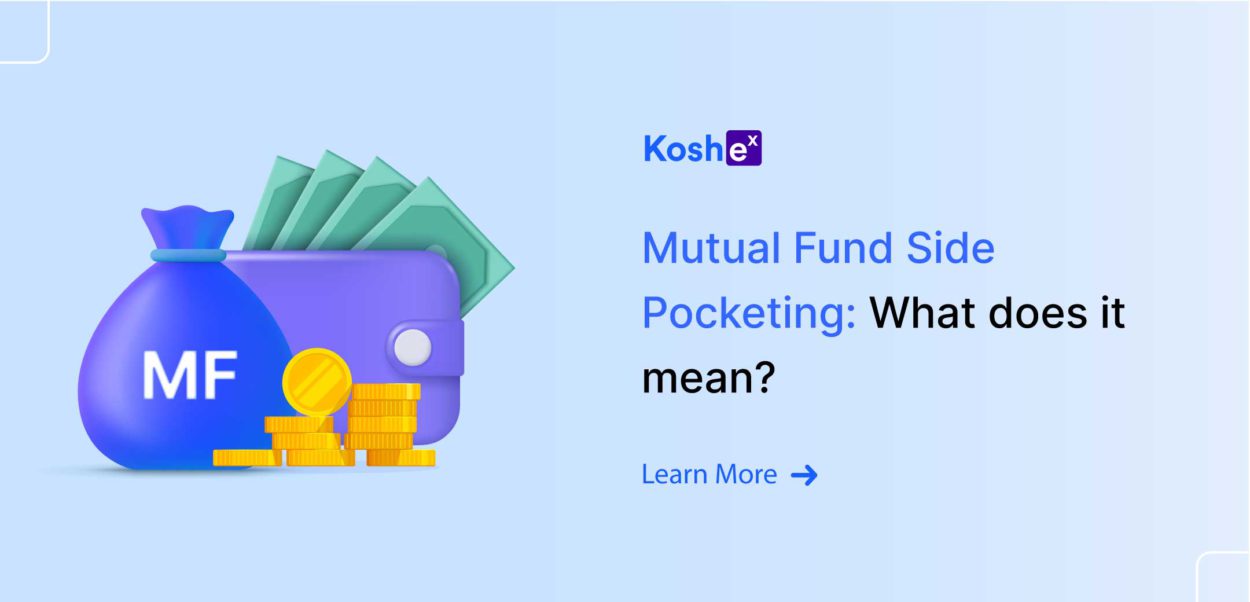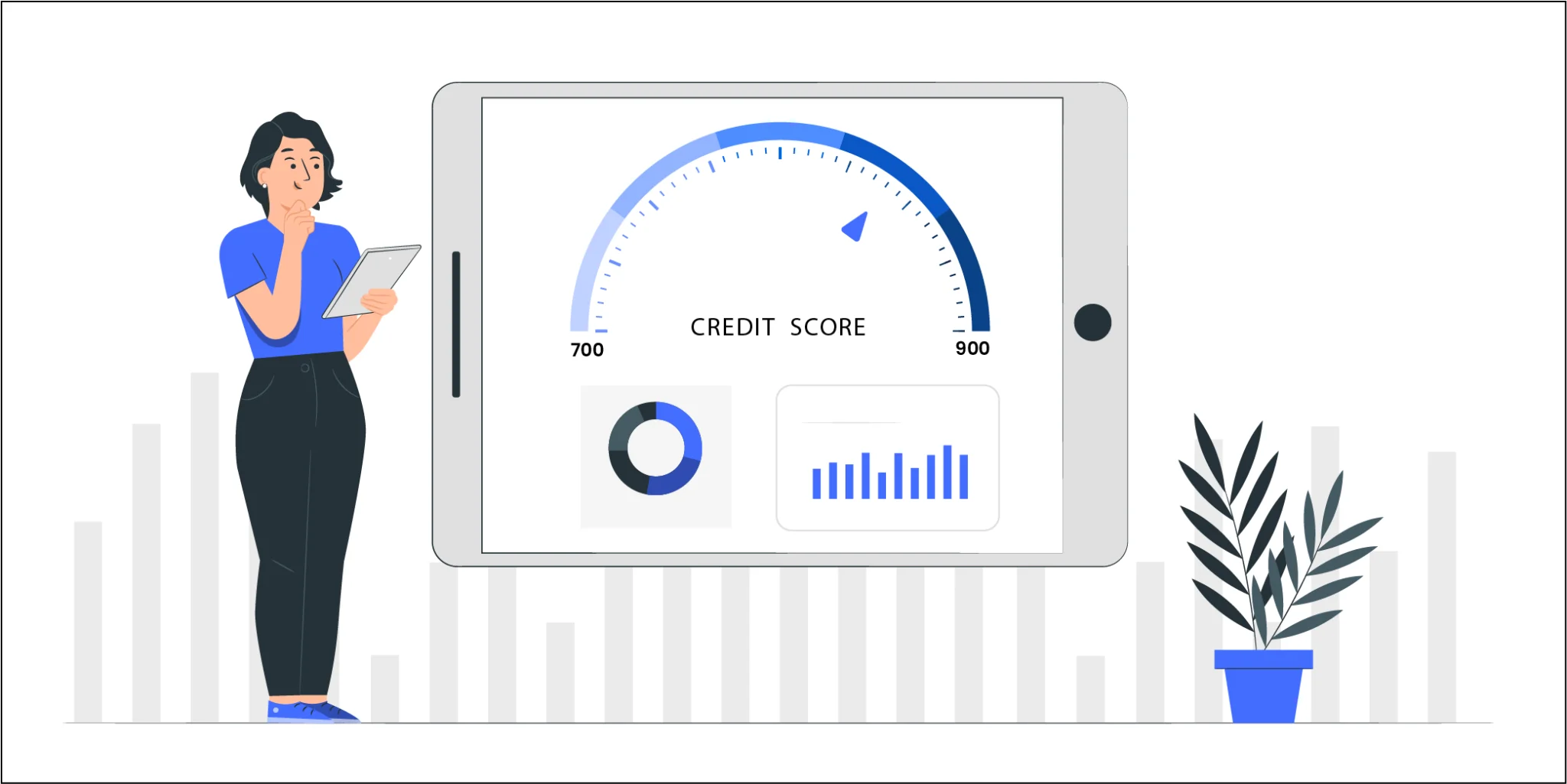Mutual fund instruments are one of the most trusted sources of investment avenues. Even a single irregularity or disaster can erode investors’ confidence in financial and capital markets. This can have long-term adverse consequences for capital markets.
Thus, it is important to take active steps whenever a downturn occurs in mutual funds. Mutual fund side-pocketing is an exercise allowed by the Securities and Exchange Board of India for mutual fund investments.
Let’s explore side-pocketing and how it affects mutual fund investors. Also, learn how Koshex presents one of the best opportunities for mutual fund investment.
What Is Mutual Fund Side-Pocketing?
Mutual fund side-pocketing is a technique used to protect investors from risky assets. Mutual fund side-pocketing is prominent in the case of debt mutual funds.
Whenever there is a downgrading in a particular asset, its value falls. Downgrading implies that the quality of the asset has reduced and therefore, there is a negative change in the rating of the asset.
This can severely impact the portfolio’s overall net asset value (NAV). This is where mutual fund side-pocketing comes into the picture.
The mutual fund houses transfer such risky assets into side pockets, also called segregated assets. These assets are assigned a separate NAV from the regular assets.
This NAV is based on the net realizable value (NRV) of these assets available to the investors. The existing investors are allotted the units of segregated assets on a pro-rata basis.
However, we should note that the units of segregated assets can be allotted only to the existing assets and not new investors. Thus, it can be said that side pocketing is done to stabilize the mutual fund scheme.
When Can Mutual Fund Side-Pocketing Be Done?
Mutual fund side-pocketing is done at the discretion of the houses. Fund houses should exercise this power judiciously.
Mutual fund side-pocketing is applied whenever certain assets experience a downfall in investment grade. It ensures that the fund’s overall NAV does not drop merely because of the downgrading and underperformance of certain assets.
Another instance to do side pocketing is when an institutional investor or a big investor exits the mutual fund scheme.
Institutional investors are the foremost ones to exit in the event of a crisis. The sell-offs by such investors are huge and can bring down the overall mutual fund value. Further, retail investors get stuck with toxic assets.
Practical Example Of Mutual Fund Side-Pocketing
Let’s understand side pocketing with a practical example.
Let’s assume that a mutual fund has a corpus of Rs 10,000 crores. Of this, Rs 500 crores are invested in a company that has defaulted on its debt obligations.
Institutional investors decide to redeem their investments. This forces the fund manager to sell the regular assets to pay the institutional investors.
As the amount invested by institutional investors is huge, a large sell-off would happen, leading to a fall in mutual fund NAV.
Ultimately, the retail and small investors would be left with credit risk, defaulted assets, and a lower NAV.
However, as the side-pocketing concept is introduced, Rs 500 crore will be segregated from Rs 10,000 crore. So, it will be Rs 9,500 crore-worth assets and Rs 500 crore of defaulted assets.
The institutional and retail investors will be allotted units in the segregated assets of Rs 500 crores while also retaining the units in regular assets of Rs. 9500 crores. This will protect the interest of retail and small investors.
Is Mutual Fund Side-Pocketing Legal?
Yes, mutual fund side-pocketing is legal in India. Although the Securities and Exchange Board of India (SEBI) was earlier reluctant to accept the mutual fund side-pocketing concept, in 2016, when JP Morgan Asset Management’s (India) investment in Amtek Auto defaulted, it resorted to side-pocketing.
After that, the Association of Mutual Funds of India (AMFI) approached SEBI to draft rules for mutual fund side-pocketing whenever there is a credit event surrounding any asset. But SEBI did not accept the recommendation.
Again, in 2018, the debt schemes witnessed a sharp fall in their NAVs. Further, credit ratings were downgraded for investments in Infrastructure Leasing and Financial Services Limited (IL&FS) and its certain subsidiaries. This resulted in changes in the regulations for debt funds, and SEBI accepted the mutual fund side-pocketing.
What Are The Consequences Of Mutual Fund Side-Pocketing For Investors?
Mutual fund side-pocketing is beneficial to investors. It allows mutual fund houses to segregate riskier assets from the regular ones or whenever there is a change in the credit rating.
The investors are allotted units in the segregated assets with a separate NAV. No new units can be issued for such segregated assets, and only the existing investors can be allotted units in the same.
This ensures that the new entrants only get the units from the normal assets and not from the downgraded and riskier assets. Further, this also stabilizes the overall mutual fund NAV.
This ensures that the exit by small investors does not get impacted when they redeem their investments. Further, it also takes care of the liquidity aspects and ensures that the investors’ liquidity is not compromised.
The redemptions are done from liquid assets, while the riskier and downgraded assets become illiquid. This is because if the house decides to sell off the downgraded assets, it will materialize the loss. Therefore, they prefer holding the same until the assets recover.
What If Side Pocketing Wasn’t There?
Small investors would have been impacted due to the credit events and sell-off by institutional investors without mutual fund side-pocketing. Whenever an asset would go bad, the institutional investors would have exited the investments, thus leaving the retail investors high and dry with the credit risk.
Further, their investments would have become illiquid as selling off the bad assets would lead to the materialization of losses.
Side-pocketing takes care of the existing and new investors. While the new investors are allotted units from the regular assets, any recovery in the segregated assets belongs only to the existing investors.
As new units cannot be issued from the segregated assets, the new investors do not get a chance to participate in the segregated portfolio.
In A Nutshell
Mutual fund side-pocketing is a great concept to safeguard investors. It has only increased the investors’ confidence. Moreover, it is legal after the SEBI has approved it.
It ensures that the retail and small investors are not trapped with underperforming and illiquid assets while the institutional investors make gains by exiting.
The panic is avoided that might have been created due to a sudden fall in NAV. Further, it also ensures that the new investors don’t participate in the segregated portfolio as they are allotted shares only in the regular portfolio of assets.
Thus, it can be said that side pocketing is a great step to protect investors and increase their confidence in debt fund investment.
It’s time to go ahead and start a mutual fund investment journey. We at Koshex assist you in investing in 5000+ funds.
You can automate your investment here to ensure that all your financial goals are achieved easily. It’s time you start actively taking active steps toward your financial goals.
Frequently asked questions
Q: Are there any disadvantages of mutual fund side-pocketing?
A: Valuation of illiquid and segregated assets can cause concern. Also, it can become difficult for investors to track the NAV of both categories of assets. Moreover, the power of side pocketing lies with the fund manager. This power must be used judiciously to avoid any irregularities.
Q: Can mutual fund houses misuse side-pocketing?
A: While the power of mutual fund side-pocketing lies with the mutual fund manager, it is unlikely that this power will be misused. Side pocketing doesn’t have any apparent losses to the investors. Further, as SEBI is the regulator for mutual fund schemes, it acts as a watchdog for any irregularities.









Leave a Comment